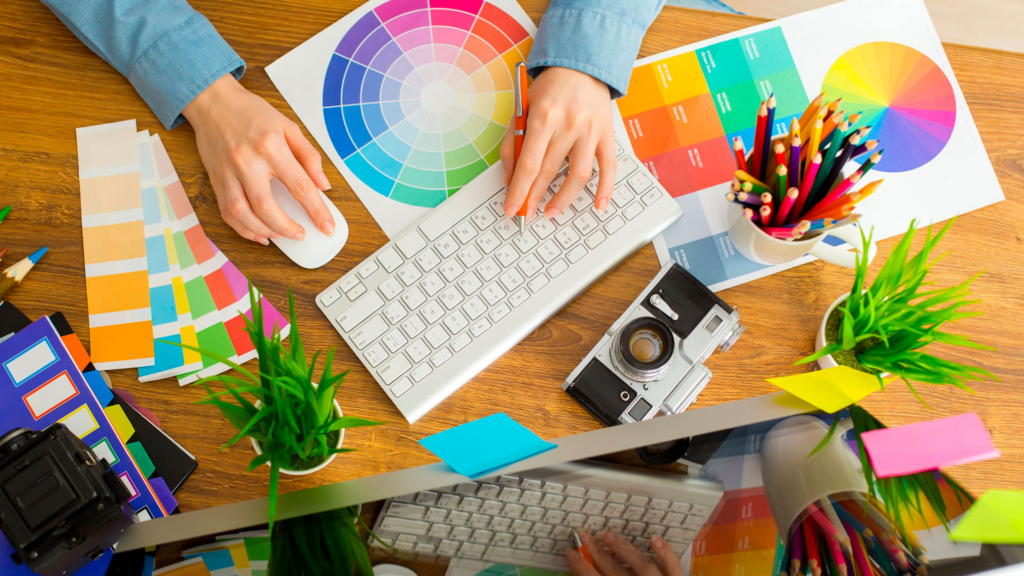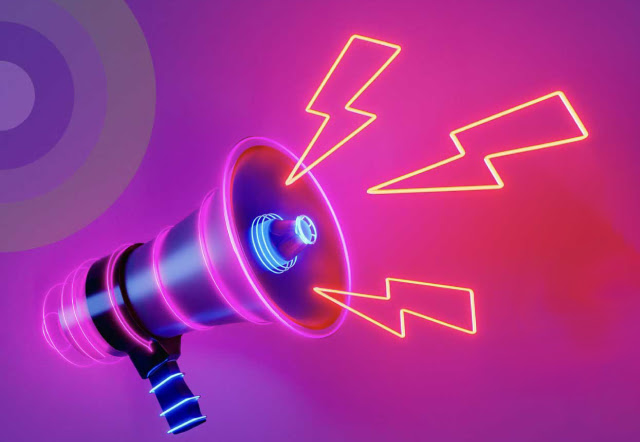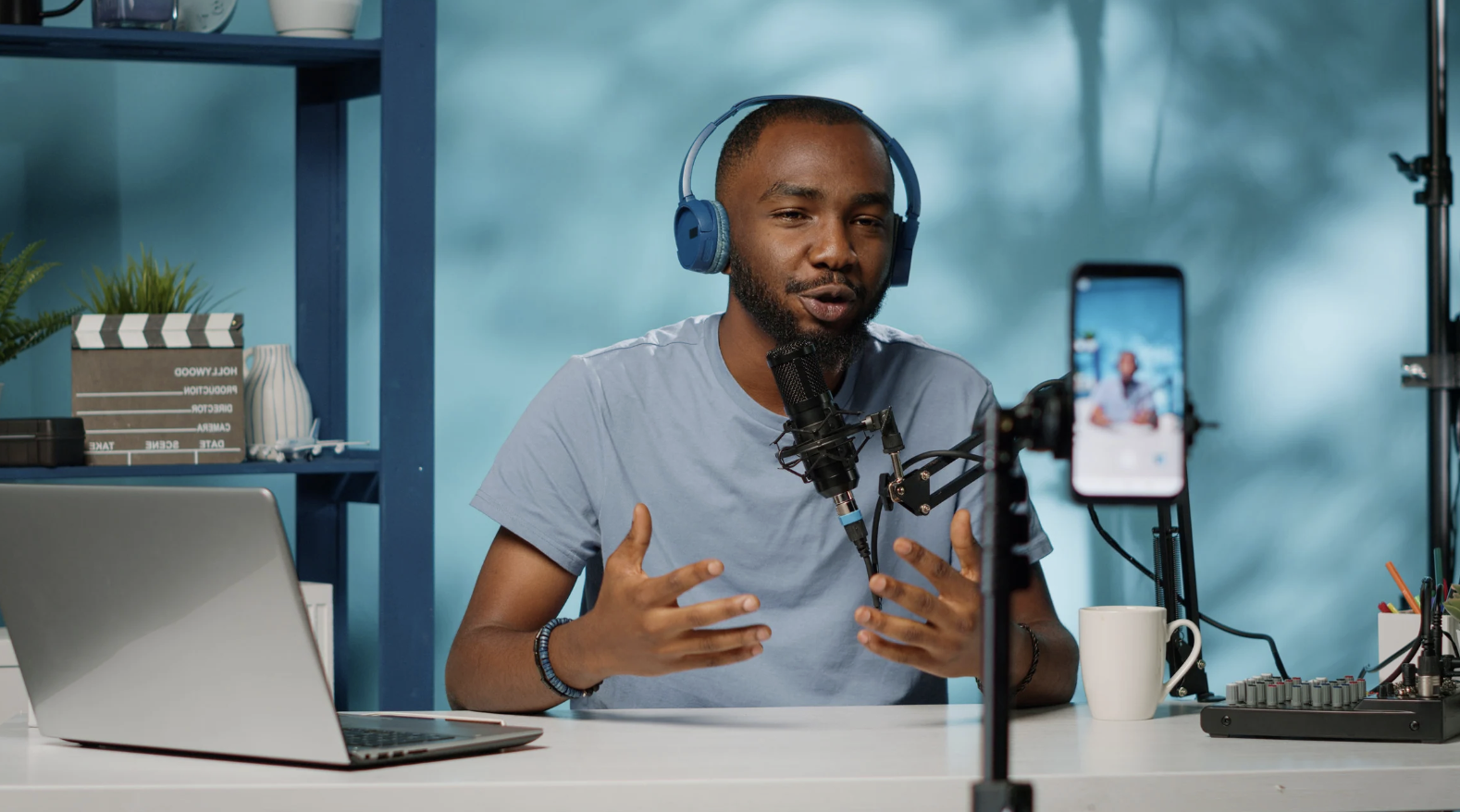What is graphic design?
Graphic design surrounds us in our everyday lives, often without us even noticing. From posters and advertisements to websites, packaging, and social media, graphic design is everywhere.
This creative field utilizes art to visually communicate goals or services to consumers, making information accessible and engaging through the use of color, typography, images, shapes, and more.
By putting these elements together, graphic design transforms complex ideas into clear, compelling visuals that pique interest and resonate with audiences.
Why is graphic design important?
With the digital world continuing to expand rapidly, graphic design has become an even more integral part of everyday life. It is present in almost everything we see online, making it challenging for brands to stand out.
When scrolling on social media, messages need to be very appealing, or shall we say arresting, to make you pause and look more closely. With an overload of information on the internet, our brains are wired to go into autopilot and only pay attention to what truly catches our eye and resonates very quickly.
This being said, visual communication is essential for effective message delivery in the online space. Visuals help convey complex information in a clear and concise way, and great graphics draw attention and boost engagement.

Great graphic design can correlate to trust and establishing credibility. A visually appealing and elevated design reflects attention to detail and professionalism, which instills trust in your brand and makes customers more likely to take notice and believe in your products or services.
Consistency in your brand’s appearance also builds integrity. When your design elements are uniform across all platforms, it demonstrates reliability and a commitment to delivering a cohesive brand experience.
This can lead to increased sales and stronger customer loyalty, as consumers are more likely to engage with a brand that presents a consistent and professional image.
When visual communication is well-conceived and well-designed, it enhances the overall effectiveness of your marketing materials, amplifying reach, and acting as a powerful tool that can shape decision-making.
How to get started with graphic design?
In today’s digital age, almost everyone has dabbled in graphic design, whether it’s through creating a presentation or color-coding a spreadsheet.
With the power of the internet and the right software, your graphic design skills can significantly improve, regardless of whether you’re a beginner or an experienced designer. Luckily, there are amazing tools available today that enable novices and professionals alike to create exceptional design projects.
Popular Graphic Design Software
Adobe Photoshop
Adobe Photoshop is one of the most popular graphic design software programs, used by millions. This tool has features for everyone, whether you are looking to make a small edit or sophisticated designs.
Affinity Designer
On the cheaper end of software, Affinity Designer is beneficial for someone looking to get started in graphic design. It allows you to move and zoom your artwork while watching gradients, effects, and adjustments change live with each transformation and curve edit.
Canva
Canva is a great resource for anyone looking to get started in graphic design. It’s free and user-friendly, with a drag-and-drop interface, a variety of templates, and pre-designed elements, enabling you to create designs quickly and efficiently. Canva also features brand kits, allowing the user to collate the brand assets such as logos, fonts, and colors for easy access and safeguarding.
These are just a few examples, but there are many other software options available, each offering unique features and specialties:
- Adobe Illustrator
- Adobe InDesign
- Figma
- Gravit Designer
- Infinite Design
- Lunacy
- Mega Creator
- Procreate
- VistaCreate
- Sketch

What’s the best way to learn graphic design?
There are numerous resources online to help you learn graphic design, including courses, YouTube videos, and step-by-step tutorials. Whether you prefer structured lessons or self-paced learning, there’s something available for everyone to develop their skills and creativity.
We recommend starting with the basics of design principles, such as color theory, typography, and layout.
Then, familiarize yourself with graphic design software and apply what you’ve learned by working on small, beginner graphic design projects as hands-on practice. This will be crucial for reinforcing your newfound skills.
As you become more comfortable with the basics, explore advanced techniques and specializations.
As with any digital skill, remember to stay updated with the latest trends, tools, and best practices, as the field is constantly evolving!
We’d recommend this free course on YouTube to give you a headstart on your journey!
The Graphic Design Process
Starting with no prior experience in graphic design can be daunting. However, understanding and applying key design elements and principles, which are the backbone of the art, can help you create visually appealing and effective designs.
Design elements are the building blocks that define the visual aspects of a composition. They serve as the tools and components used to craft a design and, ultimately, form the foundation of graphic design.
Design principles are core concepts that guide how these elements are arranged and organized within a visual composition. These principles enable designers to create designs that are visually appealing, balanced, and effective.
Key Elements of Graphic Design
Line: A fundamental component that defines space, creates forms and guides the viewer’s eye throughout the design.
Shape: Whether geometric or organic, shapes add interest and depth, creating visually pleasing layouts and patterns.
Color: A powerful element that evokes emotion, sets the mood, and conveys symbolic associations.
Texture: The perceived surface quality of a design, adding depth and enhancing the sensory experience.
Typography: The selection and arrangement of fonts, enhancing readability and influencing the viewer’s perception of the message.
Once you understand some of these basic building blocks, it’s time to infuse your unique style and utilize design principles to help arrange and organize the different elements, bringing your vision to life!

6 Principles of Graphic Design
Contrast highlights the differences between elements like color, size, or type, enhancing visual hierarchy and drawing attention to key components.
Repetition uses consistent and repeatable design elements to establish a recognizable pattern and reinforce a uniform visual message.
Alignment organizes elements neatly and orderly, often using grids, to create a clean, sharp design that easily guides the viewer’s eye.
Proximity is the idea that grouping related items together creates a sense of organization and coherence through their spatial relationship.
Balance distributes visual weight within a design to create stability and equilibrium, whether symmetrical or asymmetrical.
Space utilizes negative space around and within design elements to define importance, create separation, and achieve a sense of lightness and clarity.
Why graphic design is critical to your brand
Strong graphic design is crucial for establishing a strong and consistent brand identity. It involves creating logos, selecting color schemes, and developing visual elements that reflect the brand’s values and personality. Repeatable elements and consistent use of them reinforce memorability and long-term effectiveness.
Consistent branding across all platforms helps build brand recognition and foster trust with the audience. Graphic design plays a crucial role in establishing brand personality and authenticity while building the consumer’s perception of it.
Graphic design also enhances the user experience by guiding users through a website or app, making navigation simple and intuitive. A visually pleasing and well-designed interface not only improves usability but also builds trust in the brand.
Additionally, graphic design plays a key role in conveying the brand’s message. By utilizing visuals, typography, color, and other design elements, it communicates the brand’s story and connects with the audience on an emotional level. This helps create a unique and memorable identity that resonates with the target market and differentiates itself from competitors.
Ready to elevate your brand with stunning graphic design? Brandmark Studios can offer expert help when it comes to stunning graphic design, whether you want to create unique visuals or just need support because design isn’t your specialty. Contact us today and let’s bring your vision to life!
Contact Us to learn more!
FAQs
Is animation part of graphic design?
While it absolutely can be, not all graphic designers animate or include motion in their designs. Many graphic designers may create animated elements, like moving logos, interactive web elements, or animated advertisements. Many designers will introduce animation to enhance visual storytelling and engagement.
What is the main purpose of graphic design?
The main purpose of graphic design is to visually communicate a specific message, idea, or feeling. The ultimate goal is to produce a design that is effective in achieving its intended purpose, whether that’s selling a product, informing an audience, or enhancing user experience.
Who is the most famous graphic designer?
While there isn’t just one “most famous” graphic designer, we can think of several iconic figures who’ve significantly shaped the field. Paul Rand, a pioneer of the Swiss design style, is known for creating timeless logos for IBM, ABC, and Yale University. Saul Bass revolutionized motion picture title sequences and designed memorable logos and movie posters. Michael Bierut, a partner at Pentagram, has left his mark with designs for The New York Times Building, Saks Fifth Avenue, and Hillary Clinton’s 2016 campaign logo. Each of these designers has made enduring contributions to graphic design, making them among the most recognized in the industry.
How much does it cost to hire a graphic designer?
The fees for professional graphic design vary widely, depending on the type of project and the complexity of the design. Generally, graphic designers with more years of experience, a solid track record, and specialized skills such as in illustration or packaging, or specific industry expertise, such as in healthcare, have higher rates.



